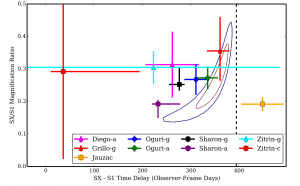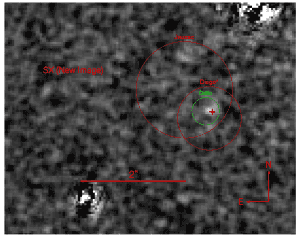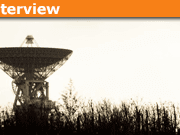The Reappearance of Supernova (SN) Refsdal
Table of Contents
Supernova (SN) Refsdal Key Points
- Astronomers have been trying to understand space for thousands of years.
- Supernova Refsdal was the first known multiply-imaged supernova.
- Multiple images of the supernova are due to strong gravitational lensing.
- Astronomers managed to predict the reappearance of the supernova.
- Multiple images of the supernova have a time delay between them.
- HST observations in December 2015 showed the fifth image of SN Refsdal.
- SN Refsdal can be used to test lens models and their assumptions.
- Some models more closely follow the observations, but all tend towards high magnifications or shorter time delays than observed.
What is Supernova (SN) Refsdal
Space is always changing. Over thousands of years, astronomers have attempted to understand the workings. Trying to explain astronomical events offers a chance to test understanding of physics on a scale completely different from the one encountered in daily life.
A group of astronomers had the opportunity to do that. They managed to predict the reappearance of a supernova already seen: Super Nova (SN) Refsdal. The SN, originally discovered in November 2014, was the first known multiply imaged SN. It was located around an early-type galaxy in the galaxy cluster MACS J1149.5+2223.
SN Refsdal’s multiple images were the result of strong gravitational lensing. Similar to an optical lens, a large concentration of mass can bend light. The more massive the gravitational lens is, the more it bends light from behind it. With strong lensing, we can observe multiple images of a single object when rays of light that would otherwise be divergent are instead redirected toward us and appear marginally displaced from each other in space.
Having seen other SN magnified by gravitational lensing, SN Refsdal was the first supernova that we have seen multiple images of. It is named after Sjur Refsdal, a Norwegian astrophysicist who was the first to discuss the possible applications of such a discovery in cosmology.
Between July and October 2015, the galaxy cluster where SN Refsdal was located was too close to the Sun to be observed by Hubble Space Telescope (HST). The team thought that Refsdal could be observed again as early as 30th October 2015, when HST was able to look at MACS J1149.5+2223 once again.
How is this possible? In addition to appearing in different locations in the sky, multiple images created by gravitational lensing also experience a time delay relative to each other. This is because the light from each image has to travel a different path before reaching us. Resulting in the light from different images arriving at different times. The light from the new image of Refsdal had to travel further to get to us than the ones we already observed, therefore arriving later.
HST observations of MACS J1149.5+2223 taken on 11th December 2015, show the appearance of an object that scientists interpret as a new image of SN Refsdal. This is the fifth image of the SN Refsdal seen and the first time, astronomers have managed to predict the appearance of a supernova! HST images containing all five appearances (figure 1).

Figure 1: HST F125W and F160W exposures of SN Refsdal (11th December 2015). S1-S4: the four previous images of the supernova in an “Einstein cross” and SX indicates the location of the newer image.
Fifth image of the SN: several teams of lens modelers revised models using the data and light curve from the previous four. Refinements were completed before the first possible observation of the fifth image of the SN, on 30th October 2015, therefore they were blind predictions. Because there is not a perfect understanding of the distribution of the dark and baryonic matter in the galaxy cluster, each model makes different assumptions, leading to different predictions for the properties of the fifth image. While there is not enough information to attempt to use SN Refsdal for precision cosmology as Sjur Refsdal had suggested in his seminal paper, SN Refsdal remains unique in its ability to test various gravitational lens models. Unlike an SN that is magnified but does not have multiple copies, a multiply imaged SN like Refsdal can be used to test not only the level of magnification a model predicts but also the relative time delay predicted between images. Comparison of observations with models (figure 2).

Figure 2: The contours indicate 68% (red) and 95% (blue) confidence levels on the magnification and time delay of the fifth image, SX. Other points mark the 68% confidence levels of each of the models. The Black dashed line indicates the delay beyond which there is no light curve data for SN Refsdal. The greater the delay between S1 and SX, the earlier we are in SX’s light curve.
Scientists note the test is local, meaning they cannot test how well the model fits everywhere, they maintain it is a good view into the uncertainties intrinsic to the models. Tests with lensed SN can provide magnitudes for uncertainties that are otherwise unknown. It is concluded, after comparing the lens models with the new observation of SN Refsdal that unknown systematic uncertainties of some models are not larger than the random ones, which validate the assumptions in the models.
Also, scientists found some of the lens models more closely follow the observations, but models, in general, tend towards high magnifications or shorter time delays than was observed. Figure 3, shows the location of the fifth image and the prediction from two of the lens models.

Figure 3: Shows the location of the fifth image, SX, anticipated by three of the lens models (circled) as well as the actual location, indicated by a cross.
FAQ
What is a supernova?
A supernova is a powerful and luminous stellar explosion. It is the most violent type of explosion in space and occurs when a star has exhausted its fuel supply and is no longer able to support itself. The resulting shockwave of energy and matter can be seen across the universe.
What causes a supernova?
Supernovae occur when a star has exhausted its fuel supply and can no longer support its gravity. This causes the star to collapse in on itself, triggering a powerful explosion.
How long does a supernova last?
The visible light from a supernova typically lasts for a few weeks or months, but the radiation from the explosion can linger for years.
Are supernovae dangerous?
Supernovae are not dangerous to us on Earth. The shockwave of energy and matter from the explosion typically dissipates before reaching us.
References
Kelly, P. L. et al. (Department of Astronomy, University of California, Berkeley).
A Nuclear Fusion Physicist and Astrophysicist.
BSc Physics & Engineering, MSc Nuclear Physics & Engineering, MSc Astrophysics, PhD Plasma Physics










Leave a Reply
Want to join the discussion?Feel free to contribute!